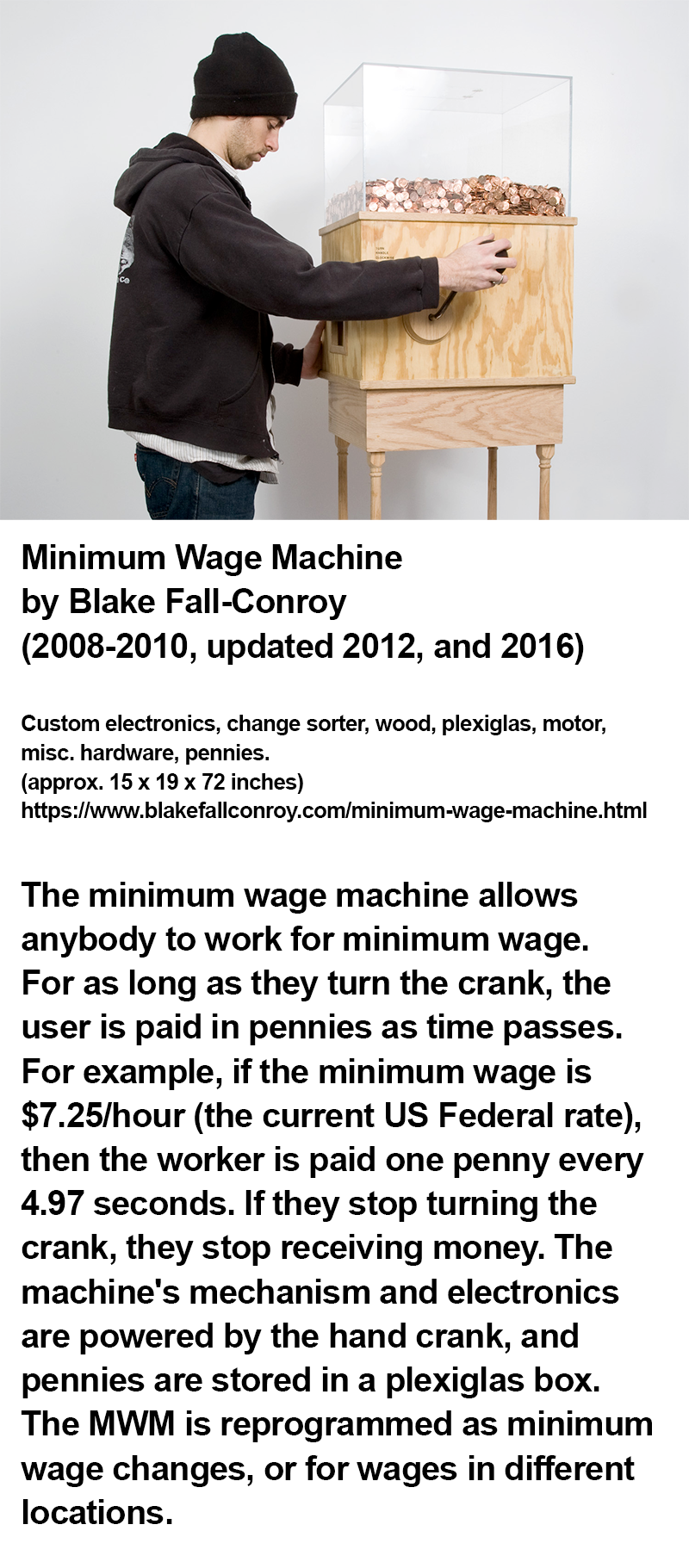The Apollo 11 crew look happy, don’t they? I didn’t recognize President Nixon at first: he looks too young. Today I have links to stories about how NASA keeps its probes free of earth germs. And keeps space germs from reaching earth. There’s an actual NASA Office of Planetary Protection. But there’s some fun in a PBS curriculum on the topic. They suggest NASA might unleash zombies. I also have links about how to identify AI deepfakes and the impact of climate change on food. And more STEM projects to keep kids busy and un-bored over the holidays. Oh, plus a Dad joke about math and science books. And an interesting art project about minimum wages that resulted in engineering a machine.
Holiday STEM Projects: Paper Circuits
Now that we’re in the holiday season, I want to continue with project ideas that might be fun and help kids learn about STEM while keeping them from being too bored. One place to start is with paper circuit cards. You use simple materials like construction paper, copper tape, a battery, and one or more LEDs. Because it might take time to get these materials together, I’m sharing these links today. If you’re interested, there should be plenty of time to get things together before the holidays.
The Great Big Guide to Paper Circuits
https://learn.sparkfun.com/tutorials/the-great-big-guide-to-paper-circuits/all
How to Make Paper Circuits | STEM Activity
https://youtu.be/ZaTKVjxt_kQ
https://www.sciencebuddies.org/stem-activities/paper-circuit
Paper Circuits Workshop in a First Grade Classroom
https://blog.sparkfuneducation.com/paper-circuits-workshop-in-a-1st-grade-classroom
DIY Paper Circuit Card
https://www.instructables.com/Design-a-Basic-Circuit/
NASA and the Zombie Apocalypse
Of course, we all know zombies don’t exist, right? And that, if they do, tall people like me will be eaten first. We’re hard to hide. It’s the short people who will hide out and eventually save the world. Oh, and that zombies likely will come from some space spore brought back to earth by NASA.
While zombies are scary fun, we saw with Covid that worldwide pandemics do happen. And a recent scientific study about tardigrades ties into this topic. If you don’t know, tardigrades are cute microscopic life forms. They survive everything: space radiation, bullets, you name it. Scientists have found tardigrade genes that protect them from damage.
I got on this topic by coming across a PBS curriculum about NASA and space contamination. It’s a topic that’s always interested me. I remember NASA quarantined the first Apollo moon mission astronauts. They spent 21 days in a Mobile Quarantine Facility trailer after landing on Earth. And space probes routinely go through a cleaning operation to remove Earth contaminants. Plus NASA has an office with the amazing name of Office of Planetary Protection. It’s a name straight out of the Men in Black movies.
I found a few more links that interested me about space, viruses, zombies, and more. Starting with the PBS curriculum.
Could NASA Start the Zombie Apocalypse? | PBS Space Time | PBS LearningMedia
https://www.pbslearningmedia.org/resource/could-nasa-start-pbs-space-time/could-nasa-start-zombie-apocalypse-video-pbs-space-time/
Preparedness 101: Zombie Pandemic Comic Book – Centers for Disease Control and Prevention
https://stacks.cdc.gov/view/cdc/6023
https://stacks.cdc.gov/view/cdc/6023/cdc_6023_DS1.pdf
https://stacks.cdc.gov/gsearch?terms=zombie+apocalypse&collection=
NASA Office of Planetary Protection
https://sma.nasa.gov/sma-disciplines/planetary-protection
https://astrobiology.nasa.gov/careers-employment/nasa-hq-planetary-protection-officer/
Spacecraft Sterilization Training Manual (1969)
https://ntrs.nasa.gov/api/citations/19690017771/downloads/19690017771.pdf
NASA Quarantine Program
https://ntrs.nasa.gov/api/citations/20230015414/downloads/NASA Quarantine Program 2023-10-23.pdf
Cosmic Luck: Apollo 11 Moon Quarantine Broke Down
https://www.nytimes.com/2023/06/09/science/nasa-moon-quarantine.html
Tardigrade – National Geographic for Kids
https://kids.nationalgeographic.com/animals/invertebrates/facts/tardigrade
Multi-omics landscape and molecular basis of radiation tolerance in a tardigrade
https://www.science.org/doi/10.1126/science.adl0799
How to Spot Deepfake Images and Videos
I first learned about deepfakes in 1990. A graphic designer showed me how the first version of Photoshop could create fake photos. He copy pasted a photo of my face into a photo of people rioting then tweaked my face to match the tones of the riot photo. If I recall, he was certain Photoshop meant the end of the world.
Fast forward to today with artificial intelligence. It too can create fake photos. More amusing, though, AI deepfakes often have obvious errors. You can spot them easily if you look closely. While Photoshop requires a person to take time creating a fake photo, AI works in moments. Anyone can create them. And an AI image can spread across the internet with little or no checking.
It’s become a critical skill to identify fake photos, videos, and information online. Besides looking to find errors in photos and videos, some deepfakes have metadata. You can find tools to extract this metadata to see what generated the image, Adobe, Microsoft, or OpenAI. But this also doesn’t work every time. Google search includes an image search tool that might find copies. This can help tell if an image is real or fake.
Here are links about how to spot fake images and videos.
Detect DeepFakes: How to counteract misinformation created by AI
https://www.media.mit.edu/projects/detect-fakes/overview/
One Tech Tip: How to spot AI-generated deepfake images
https://apnews.com/article/one-tech-tip-spotting-deepfakes-ai-8f7403c7e5a738488d74cf2326382d8c
What is a “deepfake?” And how can I recognize images that have been created with generative AI?
https://ask.library.arizona.edu/faq/407977
Search with an image on Google
https://support.google.com/websearch/answer/1325808
Smudgy chins, weird hands, dodgy numbers: seven signs you’re watching a deepfake
https://www.theguardian.com/technology/article/2024/jul/01/seven-signs-deepfake-artificial-intelligence-videos-photographs
Climate Change Impact on Food Staples
Here in New York City this late fall morning, it’s a comfortable 43 degrees Fahrenheit. Summer is a memory. But the effects of excessive summer heat still exist. And will continue to get worse. One impact is on food staples: corn, wheat, soy, rice, and potatoes. Then there’s coffee. And chocolate.
The Intergovernmental Panel on Climate Change (IPCC) generates climate change reports. They’re a UN group that assesses the science of climate change. They predict a 1.5 degree change in average temperature will reduce by half the land for coffee production in 30 years. The climate will affect other crops as well. It’s the loss of water in the air caused by heat that affects crops and livestock. And obviously severe storms can wipe out crops.
In first world countries, most people buy groceries instead of farm them. It might be difficult to make a connection between coffee in a bag and coffee growing on a farm. Yet they’re connected. Climate change impacts on heat, humidity, and storms can reduce coffee and other crops. Which will result in less food staples on grocery shelves and higher prices for what does exist.
So far, for most people, climate change has been about extreme weather. Over the next 30 years, however, the impacts will include food staples and the prices for food. Higher prices also will cause food insecurity.
Food Security – IPCC
https://www.ipcc.ch/srccl/chapter/chapter-5/
https://www.ipcc.ch/
Climate change is coming for our coffee
https://www.cnn.com/2022/01/26/business/coffee-climate-change/index.html
A Systematic Review on the Impacts of Climate Change on Coffee Agrosystems – National Library of Medicine
https://pmc.ncbi.nlm.nih.gov/articles/PMC9824350/
Climate & Chocolate
https://www.climate.gov/news-features/climate-and/climate-chocolate
What Climate Change means for your Everyday Staples
https://greenly.earth/en-us/blog/ecology-news/what-climate-change-means-for-your-everyday-staples
Five charts: How climate change is driving up food prices around the world
https://www.carbonbrief.org/five-charts-how-climate-change-is-driving-up-food-prices-around-the-world/
Extreme weather is driving food prices higher. These 5 crops are facing the biggest impacts – World Economic Forum
https://www.weforum.org/agenda/2024/02/climate-change-food-prices-drought/
This Week
Our Sunday email this week will have fun often offbeat links about students using drones in a corn maze, the sound the Earth makes when its magnetic field flips, how to intercept alien radio signals, using AI to create chatty mods for Skyrim and Stardew, and more. Look for the email this Sunday.


